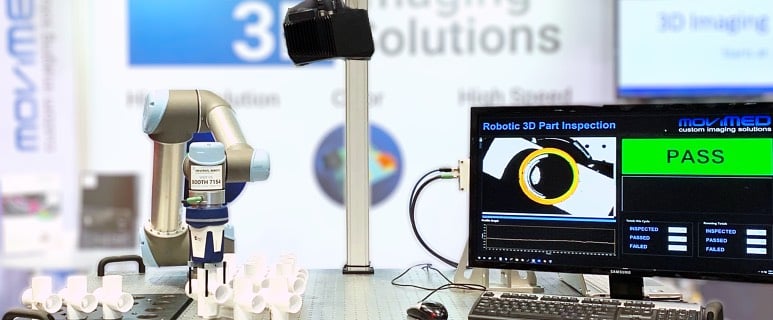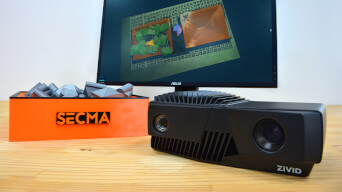Trueness - the missing metric in 3D imaging?
Published on LinkedIn, VP of Sales, Raman Sharma.
Today I want to discuss trueness, why it matters for machine vision applications, and what we did with our latest industrial 3D camera, Zivid 2, to make trueness one of our strongest differentiation features.
Want to go further? Read our white paper "Understanding accuracy in vision-guided pick and place" here:
Before going into detail on trueness, I want to recap our other points of differentiation.
- HD resolution – more pixels equals more details (information). Perfect when 3D imaging small parts and tightly stacked objects
- Native colors - in addition to depth info, the color info is always included, 1:1 with depth data in every point cloud pixel - without any external 2D camera calibration. This greatly simplifies the task of detecting and separating objects.
- HDR - the 3D camera can see more of reality by merging several captures of a target scene (like in piece picking) the 3D camera can reproduce a greater range of the reality / see more of the reality
Differentiating based on trueness is not that easy. We often confuse the concept of trueness because we have no relatable reference point. In every sensor that tries to reproduce reality, the measured value won't be exactly correct and unequivocal, but we can try to minimize errors and render them negligible.
To help level set, I decided to borrow the definition of trueness from ISO5725. The specification states:
Trueness of a measurement method is of interest when it is possible to conceive of a true value for the property being measured. Although, for some measurement methods, the true value cannot be known exactly, it may be possible to have an accepted reference value for the property being measured. The trueness of the measurement method can be investigated by comparing the accepted reference value with the level of the results given by the measurement method.
How does this relate to Zivid 2? The measurement method and results given are covered by the high-quality 3D point cloud that the Zivid 2 provides. The accepted reference value is where the various applications using high-quality points clouds come into play. A very relevant application is robotic pick-and-place.
Two fundamental parts of developing successful pick-and-place applications deal with (1) more accurate picks and fine manipulation and (2) less missed picks and crashes.
Both are manageable with 0.2% or less camera trueness - they can accept this value for the property being measured. This is exactly what the Zivid 2 delivers. We call this "true to reality".
True to reality – The ultimate human vision goal. Enables universal picking. See more SKUs.
The primary care-about for picking applications is to pick all objects accurately and reliably, without crashing or dropping. In my biased opinion, the key sub-system that delivers the care-about is the vision system. During my dozens of customer meetings during the past year, I’ve learned that the 3 key requirements of a vision system are:
- Reliable detection – Accurate picking is dependent on clear and reliable object detection. Segmentation / understanding of individual objects and boundaries. Finding possible grasp points.
- Workspace coverage – Good enough quality for the whole workspace or field of view.
- Minimal trueness error – Provide a sufficiently accurate representation of the grasp point.
It is the last requirement that has proven to be the most underappreciated challenge and the one that I consistently see customers struggle with. This is one of the motivations for Zivid Two. With 0.2% trueness, we enable customers to see more, do more. And, one more thing... we've designed Zivid 2 to provide reliable performance in real, customer environments spanning variations in temperature and vibration.
To get a Zivid 2 in your environment, please read more about our development kits.
Want to go further? Read our white paper "Understanding accuracy in vision-guided pick and place" here:
You May Also Like
These Related Stories
The new 3D vision tools enabling bin-picking automation

The takeaways from Automate 2019



